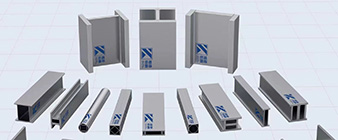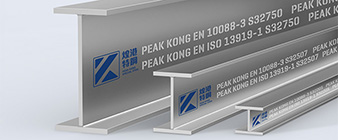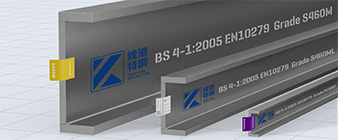1.4462 stainless steel (also known as Duplex 2205) is an excellent choice for structural hollow sections due to its excellent combination of corrosion resistance, mechanical strength and manufacturing properties. Here are the main advantages of using 1.4462 stainless steel for manufacturing structural hollow profiles:
1.4462 stainless steel has excellent resistance to pitting, crevice and stress corrosion cracking, making it suitable for use in highly corrosive environments.
The alloy’s balanced composition of 22% chromium, 5% nickel and 3% molybdenum provides superior corrosion resistance compared to conventional austenitic stainless steels.
1.4462 Structural Hollow Profiles exhibit excellent resistance to a wide range of chemicals, including acids, chlorides and various industrial environments, making them the first choice for chemical, petrochemical and marine industry applications.
1.4462 stainless steel has a unique dual-phase microstructure consisting of a balanced mixture of austenite and ferrite phases.
This dual-phase structure gives 1.4462 structural hollow profiles excellent mechanical properties, including high tensile strength (typically 620-860 MPa), high yield strength (typically 450-650 MPa), and good ductility and toughness.
The combination of strength and toughness makes 1.4462 structural hollow profiles suitable for applications where high mechanical loads, shocks or vibrations are present, such as load-bearing structures, equipment frames and industrial installations.
1.4462 stainless steel maintains its mechanical properties and corrosion resistance at temperatures ranging from low temperatures to high temperatures up to 300°C (572°F).
This thermal stability is particularly beneficial for applications involving temperature fluctuations or exposure to moderately high temperatures, such as industrial processing equipment or outdoor structures.
1.4462 stainless steel can be easily welded using a variety of techniques, including TIG, MIG, and Stick Arc Welding (SMAW).
The material’s good ductility and formability allow for easy fabrication of structural hollow profiles, including bending, rolling and machining to produce a variety of shapes and sizes.
This manufacturing flexibility enables the design and construction of complex structures and equipment using 1.4462 stainless steel.
1.4462 stainless steel exhibits mild magnetic properties due to its dual-phase microstructure (containing both austenite and ferrite phases).
This magnetic behavior may be advantageous in certain applications, such as in the manufacture of magnetic components or the design of electromagnetic shielding systems.
Overall, 1.4462 stainless steel is an excellent choice for structural hollow profiles due to its excellent corrosion resistance, mechanical strength, thermal stability and manufacturing characteristics. These properties make 1.4462 Structural Hollow Sections ideally suited for a wide range of industrial applications, particularly in the chemical, petrochemical and marine industries where high-performance and corrosion-resistant structural components are required.
-
 2024-9-16 2507 stainless steel structural profiles in water treatment of Innovative application
2024-9-16 2507 stainless steel structural profiles in water treatment of Innovative application -
 2024-9-24 EN standard 1.4401 stainless steel structural hollow Sections
2024-9-24 EN standard 1.4401 stainless steel structural hollow Sections -
 2024-9-16 What are the common applications of EN standard 1.4436 duplex stainless steel?
2024-9-16 What are the common applications of EN standard 1.4436 duplex stainless steel? -
 2024-3-22 Duplex/Super Duplex Stainless Steel Structural Sections
2024-3-22 Duplex/Super Duplex Stainless Steel Structural Sections -
 2024-9-21 S960 steel structures of Fabrication
2024-9-21 S960 steel structures of Fabrication -
 2024-7-11 Application of S690 Steel in Construction
2024-7-11 Application of S690 Steel in Construction -
 2024-9-19 Alloy 718/2.4668/UNS N07718 Structural profiles for nuclear power stations
2024-9-19 Alloy 718/2.4668/UNS N07718 Structural profiles for nuclear power stations



